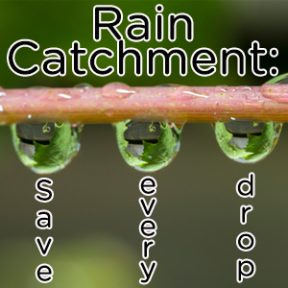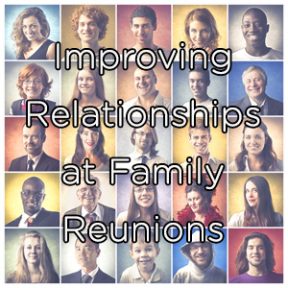 If you read the article “What If Everything You Knew About Disciplining Kids Was Wrong?“, you’re probably trying to justify how you’re parenting your children, and worse — how your parents disciplined you.
If you read the article “What If Everything You Knew About Disciplining Kids Was Wrong?“, you’re probably trying to justify how you’re parenting your children, and worse — how your parents disciplined you.
In my case, I thought about how discipline was handled at Merit Academy back in the ’90s when class sizes were a maximum of 6 students (my girls attended then).
At first blush, even with 6 students per class, our teachers didn’t have the time needed to have deep conversations with students about why they said or did something inappropriate and how they might handle the situation differently in the future. Don’t get me wrong; it’s not that our teachers were cold hearted — they absolutely weren’t — they just had a lot to handle because they provided a comprehensive academic program – TEACHING was the primary objective, and having to stop the class every time something went awry to have individual discussions with students just wasn’t possible. Sure, with big problems, the teacher met with the student during recess or lunch, but that wasn’t common.
But after reading the entire article, I agree that placing young kids on time outs or suspending teens doesn’t give them the opportunity to learn how to control themselves in the future. It’s simply punishment for their behavior. It’s worth the investment in our youth to teach them how to handle disappointment and how to conduct themselves in appropriate manners even when they are stressed out.
Luckily, this isn’t a problem at Merit Academy because class size is now just one student with one teacher, and our teachers really do spend class time working with students to help them understand responsibility, consequences, and control. I really believe the students benefit from having this structure.
I just don’t know how we can expect classroom teachers who have to manage between 20-40 students per class, to implement time-consuming disciplinary action. I think the majority of this philosophy must be implemented by parents, family and friends at home.
What do you think?
[Source]
 If you read the article “What If Everything You Knew About Disciplining Kids Was Wrong?“, you’re probably trying to justify how you’re parenting your children, and worse — how your parents disciplined you.
If you read the article “What If Everything You Knew About Disciplining Kids Was Wrong?“, you’re probably trying to justify how you’re parenting your children, and worse — how your parents disciplined you.
In my case, I thought about how discipline was handled at Merit Academy back in the ’90s when class sizes were a maximum of 6 students (my girls attended then).
At first blush, even with 6 students per class, our teachers didn’t have the time needed to have deep conversations with students about why they said or did something inappropriate and how they might handle the situation differently in the future. Don’t get me wrong; it’s not that our teachers were cold hearted — they absolutely weren’t — they just had a lot to handle because they provided a comprehensive academic program – TEACHING was the primary objective, and having to stop the class every time something went awry to have individual discussions with students just wasn’t possible. Sure, with big problems, the teacher met with the student during recess or lunch, but that wasn’t common.
But after reading the entire article, I agree that placing young kids on time outs or suspending teens doesn’t give them the opportunity to learn how to control themselves in the future. It’s simply punishment for their behavior. It’s worth the investment in our youth to teach them how to handle disappointment and how to conduct themselves in appropriate manners even when they are stressed out.
Luckily, this isn’t a problem at Merit Academy because class size is now just one student with one teacher, and our teachers really do spend class time working with students to help them understand responsibility, consequences, and control. I really believe the students benefit from having this structure.
I just don’t know how we can expect classroom teachers who have to manage between 20-40 students per class, to implement time-consuming disciplinary action. I think the majority of this philosophy must be implemented by parents, family and friends at home.
What do you think?
[Source]
 Here in California (and many of the western states), water shortages and severe drought issues have become prominent in the news. Local municipalities now have strict water restrictions and neighbors are “drought shaming“, i.e. reporting others’ misuse of water (washing cars, sprinkling lawns). Consumers are even going after commercial growers who export crops like almonds to foreign countries or bottled water companies (like Nestle) for selling our precious water reserves for profits.
Here in California (and many of the western states), water shortages and severe drought issues have become prominent in the news. Local municipalities now have strict water restrictions and neighbors are “drought shaming“, i.e. reporting others’ misuse of water (washing cars, sprinkling lawns). Consumers are even going after commercial growers who export crops like almonds to foreign countries or bottled water companies (like Nestle) for selling our precious water reserves for profits.
That’s why I set up a water-catchment system on my property!
I didn’t realize I could capture almost 8,000 gallons of water from just one storm until we tested out our new rain catchment systems. Surprisingly, the entire tank filled up in just one night! Three years ago, we installed a 4,999 gallon tank (a 5,000 gallon tank requires a building permit!) to collect rain water from the road above our house.
It was simple to do! We laid gravel on a 10-foot by 10-foot pad and Scotts Valley Sprinkler and Pipe Supply delivered it exactly where we wanted it to be. We diverted the existing drainage pipes to pour into the top of our tank and hooked the tank up to our drip irrigation system for our fruit tree orchard.
Thrilled by our ability to capture so much water in just one night, we bought 10 IBC tanks that each hold 275 gallons of water. We lined all 10 IBC tanks up behind our house and connected them together with a 2″ PVC pipe. Then we diverted one of the rain gutters from our rooftop to pour directly into one of the IBC tanks. Again, with just one storm, all 10 IBC tanks filled in just one night! We have been watering our gardens with this system all summer.
We also bought a filter system that purifies the water of petroleum and other toxic chemicals for the big tank – we didn’t want those toxins to end up in the fruit we eat! We’re building a sand-filter system (not as comprehensive) for the IBC tanks to purify the water that runs off our roof; it doesn’t have the toxic waste that the roadway has.
I plan to add more water-catchment systems so we can capture enough water to irrigate all of our trees, gardens, and landscape. It’s also reassuring to know that if we were ever without water, we could always chlorinate these tanks and have drinking water. Good to know…
 Teens today face the same basic social drama that we dealt with when WE were young, but for them, every move is magnified by the internet. What was once a rumor that spread around LOCALLY as cliques gossiped in the quad during lunch for us, is now instantly spread to everyone AND their friends through group texts, Facebook posts, Snapchat, Instragram, etc.
Teens today face the same basic social drama that we dealt with when WE were young, but for them, every move is magnified by the internet. What was once a rumor that spread around LOCALLY as cliques gossiped in the quad during lunch for us, is now instantly spread to everyone AND their friends through group texts, Facebook posts, Snapchat, Instragram, etc.
To put it in relative terms (depending on their social network), teens are dealing with a quad the size of a small city, filled with everyone they know and everyone their FRIENDS know, and those spreading hate and rumors are standing on a stage with a microphone and a speaker system that would make Pink Floyd green with envy. Basically, hurtful and just plain mean comments are blasted online instantaneously, sending teens into despair as they retreat into depression and feelings of isolation.
I read about an interesting study by Robert Selman and Emily Weinstein (a professor at the Harvard Graduate School of Education and a doctoral student, respectively), that discusses how teens help each other deal with online stress and abuse. They review what peers recommend and they give tips on how parents can reach out to teens who are targeted by cyberbullying and online stressful situations.
The basic gist is that helping teens with these problems involves being empathic, bolstering their self-esteem, and perhaps most importantly, really trying to understand the increased scope of what kids have to deal with today. Having an understanding of the social landscape can help parents partner with their teens to get through the situation.
[Source]
 I think writing personal statements and essays is probably the most dreaded part of the college application process for high school seniors. Year after year, deciding what to write and how to write it stumps even top students. Speaking as a college advisor, here are 4 things you should AVOID doing:
I think writing personal statements and essays is probably the most dreaded part of the college application process for high school seniors. Year after year, deciding what to write and how to write it stumps even top students. Speaking as a college advisor, here are 4 things you should AVOID doing:
#1: Don’t let your parents write your essays for you! Sounds ridiculous doesn’t it? But every year, I read essays written from a 40-something-year-old perspective and remind students that college admissions officers can pick out essays written by parents in a New York minute. Remember, their view on life comes with years of experience — something you don’t have. So don’t let your parents write them!
#2: Telling your story even if it doesn’t quite answer the prompt! Remember that the admissions team reads hundreds or thousands of essays that do answer the prompt so if yours doesn’t, you’ll stand out — and not in a good way. They’re obviously hunting for something from you and you NEED TO DELIVER IT. Many applicants also try to reuse essays that really don’t address the prompt, and that again, is a RED FLAG!
#3: Bore the admissions officers with general information already included on the application form, clichés and tired statements, and essays that lack personal details! Back up your statements with detailed stories that colorfully illustrate your point of view. First write your story, then carefully edit using good grammar and writing mechanics (no contractions!). Make sure your opening sentence or paragraph grabs their attention with a unique hook. Ask your English teacher or someone with great writing skills to edit it.
#4: Glaze over why you’re applying to their college! They don’t want to hear that you’ve selected their college because it’s located in a particular city or that it has a great reputation. EVERYONE SAYS THAT! Do your research and tell them why their particular departments (majors) intrigue you and how it compares to other colleges that you are considering. Find interesting clubs or unique programs that this college offers. While this may seem like an easy essay to write, you’ll do more research to prepare for writing it than any other essay topic.
If you’ve done a project — something that you started and completed on your own — definitely write about it in your personal statement or essays. It gives you the opportunity to show the college admissions officers how you’ve turned your passion into a real product, service, or event. This will clearly make your application stand out among your competition. But remember while writing about it, avoid the 4 problem areas listed above!
 I’m surprised when people react negatively to infant water safety classes. If you’re not familiar with these programs, they’re the ones that teach infants who fall into a pool how to right themselves by floating on their backs and kicking their legs until they reach the side of the pool.
I’m surprised when people react negatively to infant water safety classes. If you’re not familiar with these programs, they’re the ones that teach infants who fall into a pool how to right themselves by floating on their backs and kicking their legs until they reach the side of the pool.
The people who oppose these programs claim that these children are traumatized, screamed at, and fearful of pools after experiencing these potentially life-saving techniques. Contrary to that, my girls LOVED their first experience with swim lessons.
When my girls were very young, they learned how to swim at Polly’s Puddle in Santa Cruz. Polly had an outdoor pool that she covered with a tent, and she kept the pool at a very warm 90 degrees. All classes were taught one-on-one and parents were required to sit at the end of the pool during the class. I loved the routine: select their swim caps, then jump into the pool where their teachers caught them.

My youngest daughter, Jaclyn, loved to go “unner!” (under water). She would keep her eyes open and smile at her teacher. Because she was so young, her natural instinct was to hold her breath — she never gulped water. Jaclyn quickly learned how to flip over on her back to breathe. Kicking her feet to reach the side of the pool, she extended her arms over her head so she could feel the side of the pool and not crash into it. I loved what happened next: she would reach up with both hands and pull herself out of the pool all by herself! We all clapped our hands for her and she was one proud toddler.
My oldest daughter, Nicole, didn’t like water on her face. So Polly would dribble water down her face while she held her in her arms to help Nicole get used to the water sensation. Nicole was a little older when she started swim lessons so she learned how to swim to the side of the pool and how to take breaths until she reached it. The warm water made getting into the pool comfortable — like taking a bath.
Not sure how other programs are taught — especially the ones that parents are complaining about. Do your research and find programs that have warm water pools and are taught one-on-one. It’s worth the peace of mind knowing your babies are water safe!
 After I lost my tomato plant to a gopher — I actually saw the plant shake and then slowly disappear into the soil as the little *!@* rodent pulled it down into its labyrinth — I gave up on gardening for a decade. I couldn’t handle doing all that work to lose the fruits of my labor (LITERALLY) to rodents and pests. Trying to re-introduce gardening to me, my husband researched building a greenhouse using metal tubing and sheets of corrugated plastic. Besides the exorbitant material cost, I didn’t want an eyesore in my backyard, so we put the idea on the backburner.
After I lost my tomato plant to a gopher — I actually saw the plant shake and then slowly disappear into the soil as the little *!@* rodent pulled it down into its labyrinth — I gave up on gardening for a decade. I couldn’t handle doing all that work to lose the fruits of my labor (LITERALLY) to rodents and pests. Trying to re-introduce gardening to me, my husband researched building a greenhouse using metal tubing and sheets of corrugated plastic. Besides the exorbitant material cost, I didn’t want an eyesore in my backyard, so we put the idea on the backburner.
But it didn’t take long to rethink the greenhouse idea because our weekly trips to the farmers’ market to buy fresh, organic veggies started to eat into our retirement savings. I checked out greenhouses that were built using old windows and collected all kinds of colorful designs on Pinterest. Then I went to a local salvage yard where they sell used windows (among other things) to see what they cost. I flew to LA where my best friend owns Silverlake Yards, a salvage and restoration company in LA, and bought 17 windows and 8 glass doors for a song and rented a Budget rental truck to drive them back to Santa Cruz.
Putting the greenhouse together was like assembling a puzzle. I laid out various scenarios using the windows and doors that I had. I hired a helper to assist me with building the framework and installing the windows. There probably isn’t a square or level surface anywhere in the greenhouse because we built it using an assortment of window sizes and shapes. I love the fact that all materials were used and that I didn’t use any virgin materials. This actually saved tons of materials from going to the landfill!
I’m growing microgreens, seedlings, veggies, and fruit trees in the greenhouse. They love the warm, moist environment, and I love learning how to grow things. We even put our aquaponics system in the greenhouse. My greenhouse gives me a safe place (from rodents!) to grow veggies year round!

 Okay, now that all the pomp and circumstance celebrations are over, and your college-bound kid is reveling in get-togethers with high school friends, it’s time to get them on board with the next phase in their lives – *their college education*!
Okay, now that all the pomp and circumstance celebrations are over, and your college-bound kid is reveling in get-togethers with high school friends, it’s time to get them on board with the next phase in their lives – *their college education*!
Unlike our college days when tuition was just $1000 a year and we bounced from major to major based on a whim, spending an extra semester or two to graduate didn’t break our parents’ bank. College was supposed to be a time to explore majors and “find yourself.”
But with college tuition starting at $20,000 and as high as $60,000 (Yikes! That’s more than the average family income!), that extra year can dry up your retirement savings or eat into your next child’s college fund. So that’s why EVERY COLLEGE-BOUND STUDENT NEEDS TO CREATE THEIR FOUR-YEAR PLAN!
Most students who end up taking more than 4 years to graduate are *victims of poor planning*. They didn’t understand the progression of courses that they needed to take and when all of those courses were offered. Just about every required course has a prerequisite and with some majors, they need to take these courses during their FIRST SEMESTER in order to complete them in 4 years (especially for engineering and pre-med). With colleges operating on slashed budgets, some of these courses are offered just once per year, or worse, on odd or even years! Upper division courses often have several prerequisites, which requires careful planning in advance.
Then, every college also has set core or general education requirements that are taken in addition to the major courses. With careful planning, some gen. ed. requirements can be satisfied by lower division major courses. Again, CAREFUL PLANNING AHEAD OF TIME. Just yesterday I worked witha client who took 2 courses that satisfied 1 requirement – he’s kicking himself now…
What’s ideal about the 4-Year Plan is that your student will completely understand what courses to take AND why to take them. By doing this research, they’ll know what their major departments have to offer and requirements for special programs like Study Abroad, Internships, and Research. By adding these to the 4-year plan BEFORE starting college, they’ll take advantage of all of the wonderful opportunities available to them. So, now that the celebrations are over, it’s time for them to roll up their sleeves and create their 4-Year Plans!;
 I dropped off the last family member at the airport on Monday morning after hosting an extraordinary family reunion. Like all families, ours certainly has had our share of drama over the years, so when I planned the activities for this first family reunion, I was both hopeful and worried.
I dropped off the last family member at the airport on Monday morning after hosting an extraordinary family reunion. Like all families, ours certainly has had our share of drama over the years, so when I planned the activities for this first family reunion, I was both hopeful and worried.
I set up stations where each family member could enter information about themselves and their parents and children; give their oral history via video; and fill out the family tree on a 27-foot cloth banner. While these activities are vital to building our genealogy database, they’re usually not considered a fun activity.
So this year, we had a team of 2 to 3 people to support each interviewee. Even our really shy family members came to life with great stories and we all had fun in the process. When people couldn’t think of answers to personal questions, that was no problem for our group – others chimed in and shared their recollections, which often led to even more interesting anecdotes. Even those with a history of drama bonded as they remembered the good times. Capturing these story-telling sessions on video will certainly be fascinating, and revealing, to future generations.
Playing baby photo match-up and trivia games gave us interesting insight to family traits (physical likenesses) and idiosyncracies. I made reunion “bucks” to encourage everyone to play the games to win prizes. And our youngest family member was appointed banker, which gave him the opportunity to determine who correctly answered each question. No longer hidden behind his father, he was front and center. By the end of the weekend, everyone felt a renewed closeness and appreciation for our lineage.
We’re already planning the next reunion!
 So you just finished up your junior year in high school and you’re a senior now. Hooray! You kinda remember the college-picking hell your senior friends went through last year and promised yourself that you won’t do that yourself. And now it’s the summer before your senior year and you still haven’t started the process Don’t worry – you’re not alone.
So you just finished up your junior year in high school and you’re a senior now. Hooray! You kinda remember the college-picking hell your senior friends went through last year and promised yourself that you won’t do that yourself. And now it’s the summer before your senior year and you still haven’t started the process Don’t worry – you’re not alone.
With over 4,000 colleges in the United States, there IS a perfect college for you. Every college has its own unique programs and the best way to determine which ones are best for you is to think about your future career options. You don’t need to definitively decide what you want to be when you grow up but you SHOULD choose between 1 and 5 career options.
Then take those options and make a list of possible majors. For instance, if you want to be an elementary school teacher, you will probably major in Liberal Arts. If you’re interested in becoming a stock broker, you’ll probably major in Business Finance.
After you’ve narrowed down your list of careers and majors, rank them from 1 to 5 (1 being your top major). Then dust off your Google-fu and find colleges that have excellent departments with a variety of concentrations and degrees for each of your top 5 majors. By selecting colleges that have the programs you’re interested in, you’ll increase the odds of finding your perfect major. You don’t want to end up on a campus that doesn’t offer the majors or minors that you’re interested in, right?
To be thorough, you’ll want to find around 50 colleges. Check out their social life, extracurricular activities, and location. Cut about half of the colleges that don’t offer exactly what you’re looking for. If you’re not into wild parties, stay away from colleges known for their party scene. If you’re not into the Greek society, stay away from colleges that have large fraternities and sororities. If you’re not religious, stay away from conservative colleges that require religious worship and courses.
Once you have a great list of about 25 colleges that have everything you need, check out their average GPA, SAT/ACT scores, and selectivity ratings to see where you stand. Now cut 50% of the colleges using this criteria. One third of the list should be “Reach” colleges (institutions that normally select students who have higher GPAs and SAT/ACT scores than you have), one third should be “Target” colleges (those that have similar GPAs and SAT/ACT scores), and one third “Safety” colleges (colleges that you’ll definitely get into).
Finally, it’s time for a road trip to check out your top colleges. You’ll find that you’ll have a much better understanding about how you can benefit from each college or university by walking around the campus, sitting in on classes, eating on campus, and visiting the dorms. By the time you visit the colleges, you’ll have a great list of about 7 to 15 colleges that would be perfect for you. Apply to several colleges to ensure that you’ll get in. We’ll discuss essay topics, letters of recommendation, and other important topics soon. So get started now!
 According to an article on EdWeek, the Senate released their 2016 “plan” to fund the Department of Education in 2016. It CUTS funding from the previous year by $1.7 BILLION, to $65.5 billion.
According to an article on EdWeek, the Senate released their 2016 “plan” to fund the Department of Education in 2016. It CUTS funding from the previous year by $1.7 BILLION, to $65.5 billion.
Believe it or not, this is actually the BETTER of two bad plans – the House bill recommended cutting the budget by a whopping $2.8 BILLION. The biggest cuts appear to be in programs that support teachers, the children of immigrants and funding for guidance counselors.
By contrast, the Senate is looking for ways to increase the Pentagon budget by more than $38 billion OVER the legally mandated $499 billion cap.
The bad (well, even WORSE) news here is that due to the nature of Congress, the final bill will be a compromise between the two plans, so the BEST we can hope for will be the $1.7 billion cut, but the reality is that the cuts will probably be even deeper.
If this country is going to continue to be a world leader, we need to INCREASE the quality of our education system and support the schools, teachers and counselors who are building our future by teaching our children today.
Everyone comes from somewhere. It’s our duty to make it the best “somewhere” it can be.
[Source]










